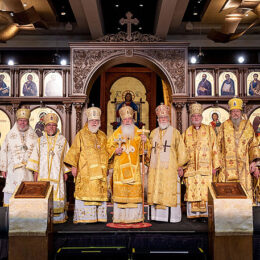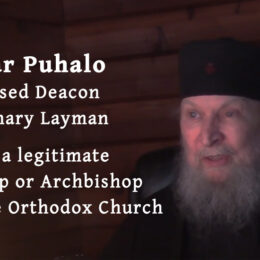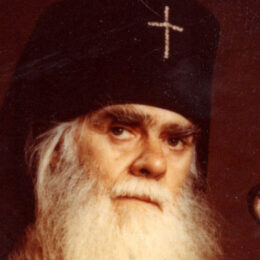December 5, 2004
Third Sunday of Advent
Father Pat’s Pastoral Ponderings
In the summer of the year 49, Paul departed from Philippi, the first city in Europe where he founded a church. He left Luke there to pastor this new congregation, but Silas and (it would seem) Timothy came with him as he proceeded southwest along the Egnatian Road, one of the great arteries that held the Roman Empire together.
A day or two and some thirty miles later, Paul’s party came to Amphipolis (Acts 17:1), about 3 miles inland from the sea, at the point where, Herodotus tells us (History 7.114), the Persian emperor Xerxes had crossed the River Strymon in 480 BC on his way down to the Battle of Thermopylae. As Paul and Silas came near Amphipolis, they could not help but notice beside the road the large statue of a lion that had already stood in that place for nearly 500 years. It was a monument erected there to commemorate the victory of the Athenians over the Edoni in 437 BC, and today’s visitors to northern Greece still stop to admire and photograph it, almost two and a half millennia after that battle.
Paul and his company, proceeding almost directly south the next day, and still walking parallel to the coast, arrived in Apollonia, whence they proceeded due west to Thessaloniki some 38 miles away (Acts 17:1). It would have required the gift of long-range prophecy for Paul to know, on that day, how important his arrival at Thessaloniki would prove to be in the course of the next 20 centuries.
Paul and the others promptly preached the Gospel and established a local church. Indeed, “promptly” is definitely the word we want here, because after only 3 weeks they were run out of town! (Cf. Acts 17:2) When physical danger obliged them to sneak away during night (17:10), Paul and his company were doubtless very discouraged. They had hardly had time, in less than a month, properly to catechize Jason and the other new converts. These, in fact, were already beginning to suffer persecution for the sake of the Christian faith (17:5-9; 1 Thessalonians 1:6).
As he continued his missionary journey, first to Berea, then to Athens, and then to Corinth, Paul remained concerned about those new Thessalonian Christians. In fact, the fruit of his concern is found in two epistles that he wrote to them during the ensuing eighteen months that he spent at Corinth between early 50 to mid-51 (Acts 18:11).
In these two epistles, Paul mainly answered the questions put to him by the Thessalonians through his envoys Silas (Silvanus) and Timothy. (This is why he included them as co-authors.) Paul endeavored to fill in some important details about Christian life and doctrine, details which his brief stay in the city had caused him to neglect. These two epistles thus served to strengthen the faith and commitment of the Thessalonians.
However difficult and unpromising may have seemed the origins of the church of the Thessalonians, the congregation was there to stay, and the history of that apostolic church is an ongoing tale of glory. All of us, moreover, have been well served by those two epistles, the earliest writings to be included in the New Testament.
The patron saint of Thessaloniki is the martyr Demetrius, apparently a young gladiator who was converted and gave his life for the faith in Christ under Emperor Maximin II in the early 4th century. When the city’s cathedral was constructed during the years 412-413 it was named for Demetrius. Damaged and partly destroyed by numerous fires over the centuries, the latest in 1917, the Cathedral of Saint Demetrius, with its five naves and very important frescoes, remains one of the great historic church buildings of Christianity.
Today’s visitor to the Thessalonian cathedral calls to mind, as he stands under its dome, the enormous significance of the spot. It was here, in 863, that consecrating hands were laid on the kneeling Cyril and Methodius, two Thessalonian brothers, who were sent forth to evangelize much of Eastern Europe. It was here, in the years between 1347 and 1359, that the faithful gathered to listen to the sermons of Gregory Palamas, one of the Church’s greatest and most subtle thinkers.
The Thessalonian church founded by Paul in A.D. 49 is very much alive to this very day, nearly nineteen and a half centuries he and his companions were forced to leave the city by night, saddened at being able to spend only three weeks preaching the Gospel in that place.



